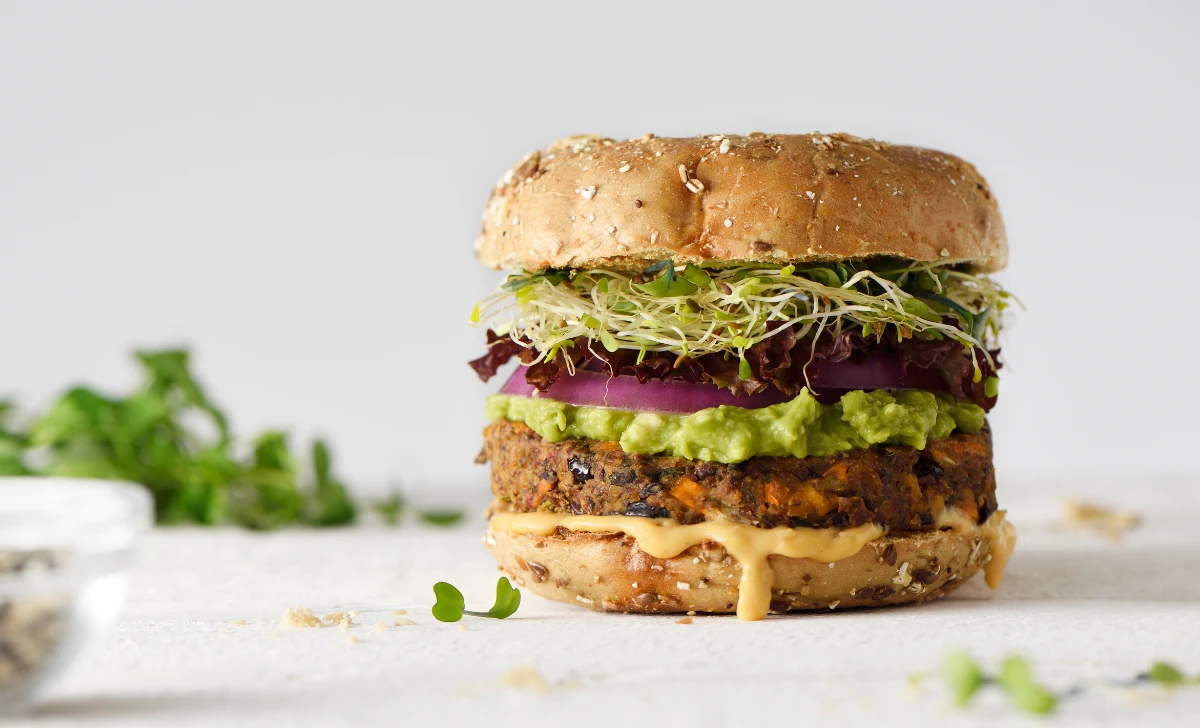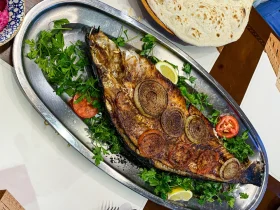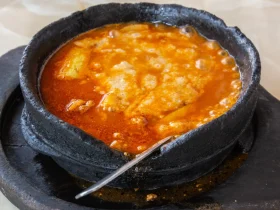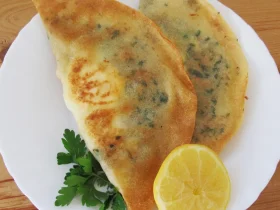Hey there, fellow food enthusiasts! Are you on the lookout for a mouthwatering, plant-powered alternative to the classic burger? Well, you’ve stumbled upon the perfect place! Today, we’re diving headfirst into the world of deliciousness as we unravel the secrets behind crafting the ultimate veggie burger. Whether you’re a full-blown vegetarian, a flexitarian, or just someone eager to tantalize your taste buds with something new, this article has got you covered. Let’s embark on this culinary adventure together, and get ready to create a veggie burger that will make your taste buds dance with joy!
[ez-toc]
History
Greetings, fellow food enthusiasts! Have you ever wondered how the delightful concoction of a veggie burger came into existence? It’s a tale that spans decades and continents, filled with innovation, experimentation, and a dash of culinary genius. Join me as we embark on a captivating journey through the history of the beloved veggie burger.
The Early Years: Plant-Based Beginnings
The concept of a veggie burger dates back to the early 20th century, when health-conscious individuals began to explore alternatives to traditional meat-based dishes. It was a time of dietary experimentation, and various plant-based protein sources were being embraced. However, it wasn’t until the 1940s that the term “veggie burger” was first coined.
1950s – 1970s: The Rise of Meat Substitutes
As vegetarianism and environmental awareness gained traction, the demand for meat alternatives grew. In the 1950s, food scientists began developing textured vegetable protein (TVP), a soy-based product that closely resembled the texture of ground meat. This breakthrough paved the way for the creation of veggie burgers with a more meat-like texture.
1980s – 1990s: A Pioneering Era
The 1980s marked a period of innovation in the veggie burger landscape. Entrepreneurs and chefs experimented with a variety of ingredients, from mushrooms and lentils to beans and grains. These culinary pioneers focused not only on mimicking the taste of meat but also on crafting unique flavor profiles that celebrated plant-based ingredients.
The 2000s: Mainstream Recognition and Beyond
The turn of the millennium saw the gradual mainstream acceptance of veggie burgers. With a growing emphasis on health and sustainability, restaurants and fast-food chains began incorporating veggie burger options into their menus. This shift reflected changing dietary preferences and a broader recognition of the benefits of plant-based eating.
Modern Times: Gourmet Creations and Global Influences
In recent years, the veggie burger has undergone a renaissance of sorts. Chefs and food enthusiasts around the world have taken the concept to new heights, infusing it with international flavors and gourmet touches. From Thai-inspired veggie burgers with lemongrass and cilantro to Mexican variations bursting with black beans and avocado, the possibilities are endless.
A Culinary Revolution: Today and Beyond
The veggie burger has evolved from a simple meat alternative to a symbol of culinary innovation and inclusivity. It has become a canvas for chefs to showcase their creativity and a testament to the ever-expanding realm of plant-based cuisine. As technology advances and our understanding of sustainable ingredients deepens, we can only imagine the exciting directions in which the veggie burger will continue to evolve.
So, there you have it – a whirlwind tour of the remarkable history of the veggie burger. From its humble beginnings as an experimental dish to its current status as a culinary marvel, the journey of the veggie burger reflects the changing tides of dietary preferences, environmental consciousness, and gastronomic ingenuity. As you savor your next veggie burger, take a moment to appreciate the rich history that has shaped this delectable delight.
Time
| Step | Time |
|---|---|
| Preparing Veggie Burger Patty Ingredients | 15 minutes |
| Creating Flavorful Spice Blend | 10 minutes |
| Chopping Fresh Ingredients | 20 minutes |
| Assembling Veggie Burger | 15 minutes |
| Cooking the Veggie Burger | 10-15 minutes (per burger) |
| Preparing Sauces and Spreads | 10 minutes |
| Making Sides and Accompaniments | 20-30 minutes (depending on side) |
| Exploring International Veggie Burger Twists | 15 minutes |
| Overcoming Veggie Burger Challenges | 15 minutes |
| Perfecting Burger Presentation | 10 minutes |
| Admiring Your Homemade Veggie Masterpiece | Lifelong enjoyment! |
Please note that cooking times may vary based on individual preferences, kitchen equipment, and experience. Enjoy your time creating and savoring your delicious veggie burgers!
Ingredients
| Ingredients | Quantity |
|---|---|
| Black beans, cooked and drained | 1 cup |
| Quinoa, cooked | 1/2 cup |
| Onion, finely chopped | 1/4 cup |
| Carrot, grated | 1/4 cup |
| Red bell pepper, diced | 1/4 cup |
| Garlic, minced | 2 cloves |
| Bread crumbs | 1/3 cup |
| Cumin powder | 1 teaspoon |
| Paprika | 1/2 teaspoon |
| Salt and pepper | To taste |
| Egg or flax egg* | 1 (for binding) |
| Olive oil | 1 tablespoon |
| Buns | 2 |
| Lettuce or spinach | A handful |
| Tomato slices | 4 slices |
| Cheese (optional) | 2 slices |
| Condiments and sauces | As desired |
| Sides (e.g., sweet potato fries) | As desired |
*For a flax egg, mix 1 tablespoon of ground flaxseed with 3 tablespoons of water and let it sit for 5-10 minutes until it becomes gel-like.
Please adjust the quantities based on your personal preferences and enjoy your delicious homemade veggie burgers!
Directions
Step 1: Preparing Veggie Burger Patty Ingredients
- Start by draining and rinsing 1 cup of cooked black beans. Place them in a mixing bowl.
- Add 1/2 cup of cooked quinoa to the beans.
- Incorporate 1/4 cup of finely chopped onion, 1/4 cup of grated carrot, and 1/4 cup of diced red bell pepper.
- Mix in 2 minced cloves of garlic for an extra burst of flavor.
- Add 1/3 cup of bread crumbs to help bind the mixture together.
- Season with 1 teaspoon of cumin powder, 1/2 teaspoon of paprika, and salt and pepper to taste.
- For binding, either use 1 beaten egg or prepare a flax egg by mixing 1 tablespoon of ground flaxseed with 3 tablespoons of water. Let it sit for 5-10 minutes until it thickens.
- Combine all the ingredients thoroughly until well mixed.
Step 2: Shaping and Assembling the Veggie Patties
- Divide the mixture into 2 portions and shape them into burger patties.
- In a skillet, heat 1 tablespoon of olive oil over medium heat.
- Carefully place the patties in the skillet and cook for 5-7 minutes on each side or until they develop a crispy outer layer and are heated through.
Step 3: Building Your Dream Veggie Burger
- While the patties are cooking, slice the buns in half and lightly toast them if desired.
- On the bottom half of each bun, layer a handful of lettuce or spinach.
- Place the cooked veggie patty on top of the greens.
- Add 2 slices of tomato for a burst of freshness.
- If you’re a fan of cheese, place a slice of your preferred cheese on the patty.
- Drizzle your favorite condiments and sauces for that perfect finishing touch.
Step 4: Creating Sides that Shine
- While your veggie burgers are coming together, prepare your chosen sides.
- Crispy sweet potato fries or a refreshing side salad are excellent choices to complement your burgers.
Step 5: Relishing in the Veggie Burger Masterpiece
- Carefully place the top half of the bun over your assembled veggie burger.
- Take a moment to admire your creation – the layers of flavors, colors, and textures that make up your masterpiece.
- Serve your veggie burger with the chosen side and savor each bite, reveling in the deliciousness you’ve created.
Congratulations, you’ve successfully crafted your very own ultimate veggie burger! The combination of flavors, the balance of textures, and the satisfaction of creating a plant-based masterpiece will surely leave you craving more.
Equipment Required
Nutrition Information
| Nutrient | Amount Per Serving |
|---|---|
| Serving Size | 1 burger |
| Calories | ~350 |
| Total Fat | 12g |
| – Saturated Fat | 1.5g |
| Cholesterol | 0mg |
| Sodium | 550mg |
| Total Carbohydrates | 50g |
| – Dietary Fiber | 12g |
| – Sugars | 4g |
| Protein | 15g |
| Vitamin D | 0% DV |
| Calcium | 10% DV |
| Iron | 25% DV |
| Potassium | 15% DV |
Please note that these values are approximate and can vary based on the specific ingredients and brands used. It’s always a good idea to consult nutritional labels and calculators for accurate information, especially if you have specific dietary requirements or preferences. Enjoy your veggie burgers while staying mindful of your nutritional intake!
Tips
- Texture Matters: Achieving the perfect texture for your veggie burger is key. Make sure to drain and pat dry the black beans before using them, and finely chop the vegetables for a consistent texture.
- Bind with Care: Whether using an egg or a flax egg, ensure proper binding to prevent patties from falling apart during cooking.
- Flavor Layering: Don’t be afraid to experiment with various spices and herbs to elevate the flavor profile of your burger patty.
- Cooking Techniques: If pan-frying, make sure the skillet is well-heated and lightly oiled for a crispy exterior.
- Keep It Crisp: If baking the patties, place them on a parchment-lined baking sheet to prevent sticking and ensure even browning.
Pros & Cons
| Pros | Cons |
|---|---|
| ✅ Wholesome plant-based ingredients | ❌ Requires preparation time |
| ✅ Nutrient-packed and balanced | ❌ May be challenging for beginners |
| ✅ Customizable with various toppings | ❌ Texture may not replicate meat entirely |
| ✅ Suitable for vegetarians and flexitarians | ❌ Patties may be delicate and require careful handling |
| ✅ Supports health-conscious and eco-friendly diets | ❌ May require additional condiments for optimal flavor |
Conclusion
Congratulations, adventurous cooks! You’ve journeyed through the flavors, textures, and nuances of crafting the ultimate veggie burger. As you stand at the culmination of this culinary adventure, remember that your kitchen is a canvas, and your veggie burger is a masterpiece waiting to be brought to life.
By now, you’ve learned to blend plant-based ingredients into a patty that’s not just nutritious, but bursting with flavors that dance on your taste buds. You’ve discovered the art of layering toppings and sauces, turning a simple burger into a symphony of tastes and textures. And most importantly, you’ve experienced the joy of creating a meal that’s not only delicious but aligns with your values and aspirations for a greener world.
So, why wait? Dive into the world of veggie burgers and unleash your culinary creativity. Whether you’re a seasoned chef or a kitchen novice, this recipe offers a playground for your taste buds to explore, experiment, and enjoy. Remember, every cook adds their unique touch, making each bite a reflection of your own journey.
With each sizzling patty and every well-seasoned topping, you’re not just making a meal – you’re embracing a lifestyle that values health, sustainability, and gastronomic delight. So gather your ingredients, don your apron, and let the sizzle of the skillet ignite your passion for creating a masterpiece that’s as good for your taste buds as it is for the planet.
Here’s to crafting, cooking, and savoring your own ultimate veggie burger – a reflection of your culinary prowess and a testament to the endless possibilities of plant-based cuisine. So, go ahead – take that first bite, let the flavors explode, and relish in the satisfaction of creating something truly extraordinary. Your veggie burger journey awaits – happy cooking! 🍔🌱
Facts
- 🌱 Fact 1: Veggie Burger Time Travel 🕰️
- Did you know that the concept of veggie burgers can be traced back to ancient civilizations? In the Indian subcontinent, a dish known as “falafel” – made from ground chickpeas – was already a culinary gem over a thousand years ago! It just goes to show that plant-based creativity is truly timeless.
- 🍔 Fact 2: Burgerception – The Earliest Veggie Burger 🌽
- Way back in 1982, food enthusiast Gregory Sams decided to create the world’s first known commercially available veggie burger. He called it the “VegeBurger” and offered it at his restaurant in London. Little did he know that he was setting the stage for a plant-based revolution that would span the globe.
- 🎨 Fact 3: Picasso of Patties 🖌️
- Becoming a veggie burger virtuoso means embracing your inner artist! Crafting your patty is akin to painting a masterpiece, where black beans, quinoa, veggies, and spices become your vibrant palette. Don’t forget – your kitchen is your canvas, and your taste buds are your critics.
- 🚀 Fact 4: Beyond Space, Beyond Meat 🌌
- In 2019, the Impossible Burger made history by becoming the first plant-based burger to be served in space! The Crew Dragon spacecraft carried a payload of scientific experiments, and among them was the Impossible Burger patty. Veggie burgers – boldly going where no burger has gone before!
- 🌍 Fact 5: World’s Largest Veggie Burger 🌎
- Ever wonder about the largest veggie burger on record? It was cooked up in 2012 in Ontario, Canada, weighing a whopping 2681 pounds (1216 kg)! This colossal creation took a team of chefs, hundreds of pounds of beans, grains, and veggies, and, of course, a large grilling surface. Now that’s a veggie burger for the books!
FAQ’s
Can I make the veggie burger patties ahead of time and freeze them?
Absolutely! After shaping the patties, place them on a baking sheet lined with parchment paper and freeze until firm. Then, transfer them to an airtight container or freezer-safe bag for up to 3 months. Cook from frozen or thaw in the refrigerator before cooking.
Can I grill the veggie burgers instead of pan-frying them?
Yes, you can! Preheat your grill to medium-high heat and lightly oil the grates. Grill the patties for about 4-5 minutes per side or until they develop grill marks and are heated through.
Can I substitute the quinoa with another grain?
Absolutely! Feel free to use cooked brown rice, bulgur, or even farro as a substitute for quinoa in the recipe.
What can I use instead of eggs for binding?
If you’re looking for a vegan option, you can use a flax egg (1 tablespoon ground flaxseed mixed with 3 tablespoons water) or mashed avocado to help bind the ingredients.
Can I use canned beans instead of cooking them from scratch?
Definitely! You can use canned black beans, just make sure to drain and rinse them well before using.
How can I prevent the patties from falling apart during cooking?
To prevent patties from falling apart, ensure that the mixture is well-mixed and use the recommended binding agent, whether it’s an egg or a flax egg. Cooking them on a well-heated, lightly oiled surface also helps in achieving a crisp exterior that holds together.
Are there gluten-free bun options available for this recipe?
Yes, many grocery stores offer gluten-free bun options. Look for buns labeled as gluten-free or explore gluten-free bakeries in your area.
Can I make a large batch of veggie burger patties for meal prepping?
Absolutely! Double or triple the recipe to make a larger batch of patties. Freeze the extra patties individually for convenient, quick meals.
What can I use as a low-carb substitute for bread crumbs?
You can use crushed pork rinds, almond flour, or ground sunflower seeds as a low-carb alternative to bread crumbs.
Can kids enjoy these veggie burgers too?
Absolutely! These veggie burgers can be a great way to introduce kids to plant-based eating. You can customize the flavors and toppings to suit their preferences and make the experience fun and delicious.












Leave a Review